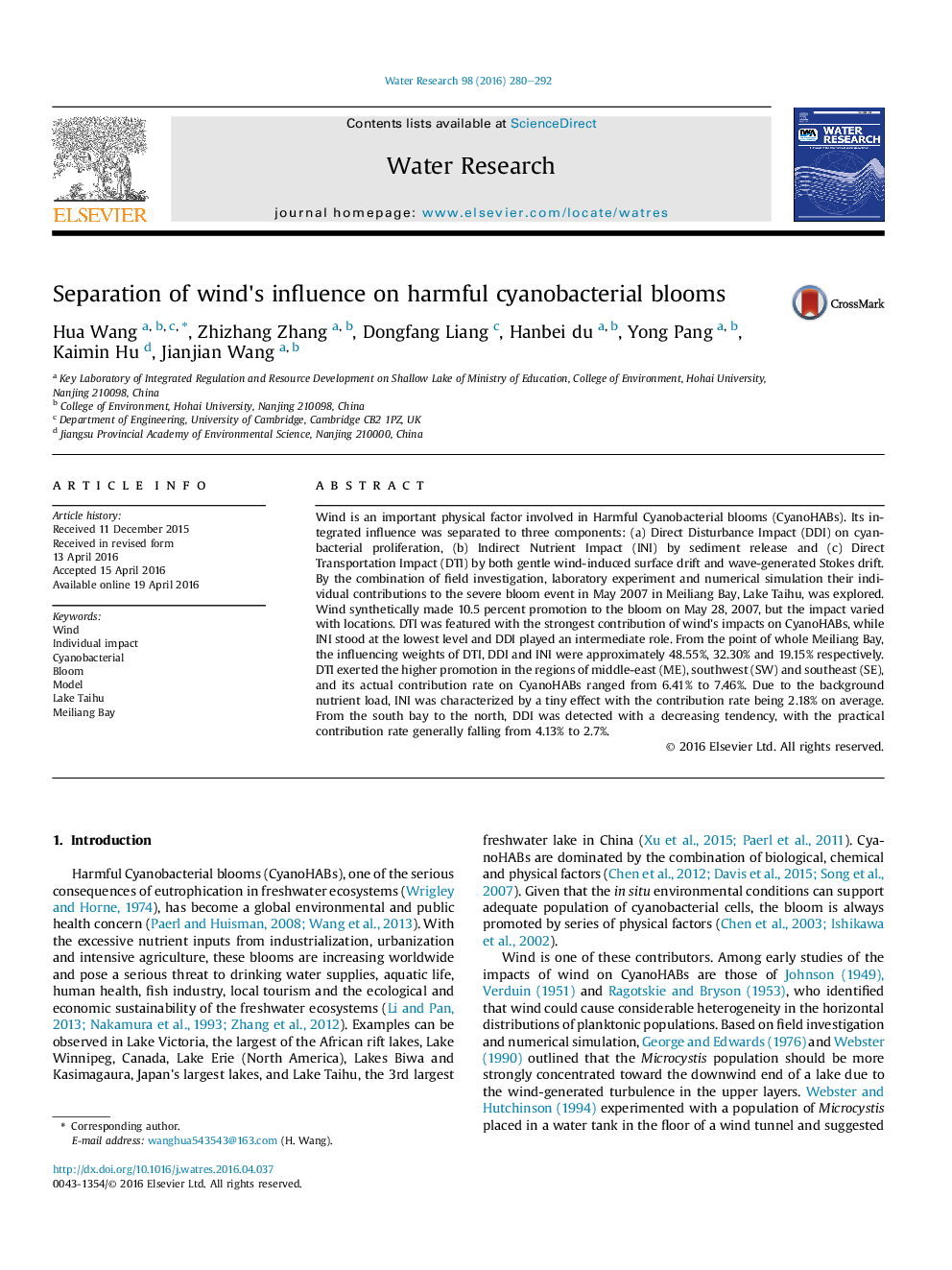| Article ID | Journal | Published Year | Pages | File Type |
|---|---|---|---|---|
| 4480994 | Water Research | 2016 | 13 Pages |
•Wind imposes direct and indirect impacts on CyanoHABs.•Wind's influence on CyanoHABs can be separated to three components.•Wind contributions to the severe CyanoHABs at Meiliang Bay in May 2007.
Wind is an important physical factor involved in Harmful Cyanobacterial blooms (CyanoHABs). Its integrated influence was separated to three components: (a) Direct Disturbance Impact (DDI) on cyanbacterial proliferation, (b) Indirect Nutrient Impact (INI) by sediment release and (c) Direct Transportation Impact (DTI) by both gentle wind-induced surface drift and wave-generated Stokes drift. By the combination of field investigation, laboratory experiment and numerical simulation their individual contributions to the severe bloom event in May 2007 in Meiliang Bay, Lake Taihu, was explored. Wind synthetically made 10.5 percent promotion to the bloom on May 28, 2007, but the impact varied with locations. DTI was featured with the strongest contribution of wind's impacts on CyanoHABs, while INI stood at the lowest level and DDI played an intermediate role. From the point of whole Meiliang Bay, the influencing weights of DTI, DDI and INI were approximately 48.55%, 32.30% and 19.15% respectively. DTI exerted the higher promotion in the regions of middle-east (ME), southwest (SW) and southeast (SE), and its actual contribution rate on CyanoHABs ranged from 6.41% to 7.46%. Due to the background nutrient load, INI was characterized by a tiny effect with the contribution rate being 2.18% on average. From the south bay to the north, DDI was detected with a decreasing tendency, with the practical contribution rate generally falling from 4.13% to 2.7%.
Graphical abstractFigure optionsDownload full-size imageDownload high-quality image (241 K)Download as PowerPoint slide
